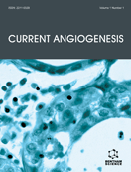Abstract
Neovascularisation is a vital process underlying the development and progression of malignant neoplasms. Limited information on the subject is available regarding Waldenstrom’s macroglobulinemia/Lymphoplasmacytic lymphoma (WM/LPL), a rare and usually indolent B-cell lymphoma. We therefore studied by immunohistochemistry microvessel characteristics and IL-6, IL-8, CXCR2 and VEGF expression in the bone marrow of WM/LPL patients and investigated any possible correlation with disease characteristics and outcome. Sixty-three patients were studied (47 WM and 16 LPL) of whom 32, 25 and 6 were low, intermediate and high risk respectively, according to the IPSSWM staging system. Seventy-six percent of the patients required treatment while 24% were asymptomatic and were regularly followed- up. Microvascular characteristics, i.e microvessel density (MVD), total vascular area (TVA) and several other sizeand shape-related parameters, were evaluated in CD34-stained bone marrow slides using computerized image analysis. A Histo-score (H-score) was calculated for IL-6, IL-8, CXCR2 and VEGF expression. IL-6, IL-8, IL-8 receptor CXCR2 and VEGF expression was observed in 84%, 43%, 89% and 90% respectively. A positive correlation between IL-6 and CXCR2 H-scores was observed; IL-6 and VEGF H-scores correlated with hypoalbulinemia and increased serum β2- microglobulin respectively and both with bone marrow lymphoplasmacytic infiltration and MVD. The degree of angiogenesis, microvessel shape, VEGF expression and CXCR2 expression correlated with a shorter time to first treatment in multivariate analysis. In conclusion, in WM/LPL, increased expression of Th-2 cytokines, CXCR2 and VEGF is implicated in neovascularization. CXCR2 and VEGF expression along with the extent and the architecture of the microvessels are brought forward as contributors to biologic aggressiveness reflected by a need for earlier treatment.
Keywords: Angiogenesis, CD34, CXCR2, IL-6, IL-8, lymphoplasmacytic lymphoma, pathophysiology, prognosis, VEGF, Waldenstrom’s macroglobulinemia.
 33
33

